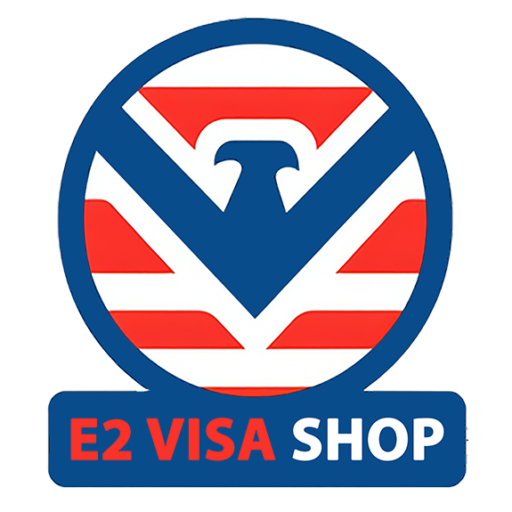
The E-2 visa is a popular choice for investors and entrepreneurs looking to start or buy a business in the United States. However, not everyone qualifies for the E-2 visa due to nationality restrictions, investment requirements, or other limitations. If the E-2 visa is not a viable option, there are several alternative pathways to consider, including employment-based and investment-based visas.
1. EB-2 National Interest Waiver (NIW)
Who is it for?
- Professionals with an advanced degree or exceptional ability in their field.
- Individuals whose work benefits the U.S. in a significant way, particularly in industries like technology, healthcare, engineering, and business.
- Entrepreneurs and business owners with innovative startups that contribute to the U.S. economy.
Key Advantages:
- No employer sponsorship required (self-petition possible).
- No fixed investment amount is necessary.
- Grants permanent residency (green card) rather than a temporary visa.
- More flexibility in employment and business activities compared to the E-2 visa.
Challenges:
- Requires strong documentation proving the applicant’s work is of “national interest.”
- Processing time can be longer than E-2 (6-12 months for I-140 approval, plus green card processing time).
2. EB-5 Immigrant Investor Visa
Who is it for?
- Foreign nationals willing to invest at least $800,000 in a Targeted Employment Area (TEA) or $1,050,000 in other areas.
- Investors who can create at least 10 full-time jobs for U.S. workers.
Key Advantages:
- Direct pathway to a green card.
- Spouse and children (under 21) can obtain green cards as dependents.
- No specific educational or professional background required.
Challenges:
- High investment threshold compared to the E-2 visa.
- Long processing times (several years in some cases).
- Risk of losing the investment if the business fails.
For EB-5 information visit: www.eb5advisory.com
3. L-1 Intracompany Transfer Visa
Who is it for?
- Business owners, executives, or managers who wish to expand their foreign business into the U.S..
- Employees of a multinational company who want to transfer to a U.S. branch or subsidiary.
Key Advantages:
- No minimum investment required.
- Dual intent allowed (can transition to a green card under EB-1C).
- Can be an alternative for E-2 applicants from non-treaty countries.
Challenges:
- Requires an existing foreign company that has been operational for at least one year.
- The U.S. branch must be active and viable to maintain the L-1 status.
- Limited initial stay (1 year for new offices, extendable up to 7 years for executives and managers).
4. O-1 Visa for Individuals with Extraordinary Ability
Who is it for?
- Individuals with exceptional achievements in sciences, arts, education, business, or athletics.
- Entrepreneurs with groundbreaking innovations or significant industry contributions.
Key Advantages:
- No investment requirement.
- No specific nationality restrictions.
- Can lead to a green card under the EB-1A category.
Challenges:
- Requires substantial documentation of extraordinary ability (awards, media recognition, expert recommendations).
- Requires a U.S. sponsor or agent.
5. H-1B Specialty Occupation Visa
Who is it for?
- Professionals with at least a bachelor’s degree (or equivalent experience) in a specialty occupation.
- Commonly used for IT professionals, engineers, finance experts, and healthcare professionals.
Key Advantages:
- Allows employment in the U.S. with a sponsoring employer.
- Can lead to permanent residency through the EB-2 or EB-3 green card process.
- Spouses (under H-4) may obtain work authorization in some cases.
Challenges:
- Requires employer sponsorship.
- Subject to an annual lottery with limited visa availability.
- Maximum duration of 6 years unless transitioning to a green card.
6. TN Visa (For Canadian and Mexican Citizens)
Who is it for?
- Professionals from Canada and Mexico in eligible occupations under NAFTA/USMCA.
- Common for engineers, scientists, accountants, and healthcare professionals.
Key Advantages:
- No investment required.
- Fast processing with border or consulate application.
- Renewable indefinitely as long as employment continues.
Challenges:
- Only available to Canadian and Mexican nationals.
- Does not provide a direct pathway to a green card.
Which Alternative is Best for You?
| Visa Type | Investment Required | Work Authorization | Green Card Pathway | Key Requirement |
|---|---|---|---|---|
| E-2 | ~$100K+ | Business Owner | No (Temporary Visa) | Treaty Country, Active Business |
| EB-2 NIW | None | Yes | Yes (Green Card) | Advanced Degree or National Interest Work |
| EB-5 | $800K – $1.05M | Business Owner | Yes (Green Card) | Job Creation & High Investment |
| L-1 | None | Yes | Yes (EB-1C Green Card) | Foreign Business Expansion |
| O-1 | None | Yes | Yes (EB-1A Green Card) | Extraordinary Ability |
| H-1B | None | Employer Sponsorship | Yes (EB-2 or EB-3 Green Card) | Specialty Occupation, Lottery |
| TN | None | Employer Sponsorship | No | Limited to Canadian & Mexican Citizens |
Final Thoughts
While the E-2 visa remains a strong option for entrepreneurs and investors, alternatives such as the EB-2 NIW, EB-5, L-1, and O-1 visas provide viable pathways to U.S. residency and business expansion. The best option depends on factors such as investment capacity, business plans, professional background, and long-term goals.
For EB-5 information visit: www.eb5advisory.com
